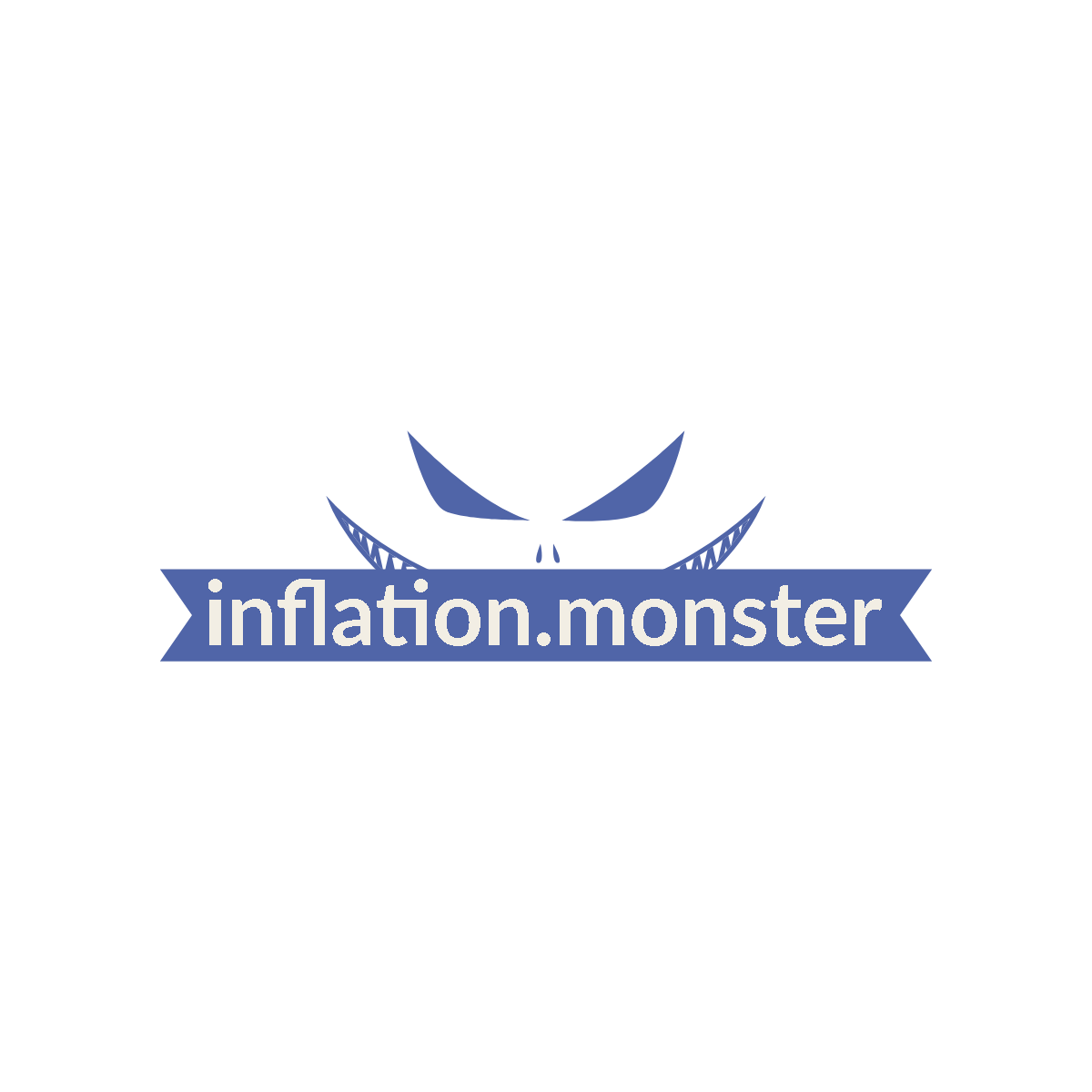In this article, we explore the fascinating relationship between inflation and technological advancements, shedding light on how these two forces have influenced each other over the years. At Inflation.Monster, we strive to provide you with insightful content that demystifies the complexities of inflation and its impact on our economy. With the ever-evolving landscape of technology, it is crucial to understand how advancements in this field can both fuel and mitigate inflationary pressures. So buckle up and join us on this journey as we unravel the link between inflation and the influence of technological advancements.

Historical Overview of Inflation
Introduction to Inflation
Inflation is a term used to describe the general increase in prices of goods and services in an economy over a period of time. It is typically measured using various economic indicators, such as the Consumer Price Index (CPI) or the Producer Price Index (PPI). Inflation is often a result of the imbalance between the supply and demand for goods and services.
Factors Contributing to Inflation
There are several factors that can contribute to inflation. One of the primary causes is an increase in the supply of money in an economy. When there is more money circulating, it can lead to an increase in consumer spending, which can in turn drive up prices. Additionally, changes in government policies, such as fiscal and monetary measures, can also influence inflation rates.
Effects of Inflation on Economies
Inflation can have both positive and negative effects on economies. On the positive side, moderate inflation can stimulate economic growth by encouraging spending and investment. It can also help reduce the burden of debt for borrowers. However, high inflation rates can erode the purchasing power of consumers, leading to a decrease in standards of living. It can also create uncertainty and instability in financial markets.
Historical Examples of Inflation
Throughout history, there have been numerous examples of inflation and its impact on economies. One notable example is the hyperinflation that occurred in Germany during the 1920s, known as the Weimar Republic hyperinflation. Prices skyrocketed to extreme levels, leading to the collapse of the German currency and severe economic hardship for its citizens. Another example is the inflationary period experienced by many countries in the 1970s, known as the “stagflation” era, which combined high inflation with stagnant economic growth.
Role of Technological Advancements in Inflation
Technological advancements have played a significant role in shaping inflation trends in economies. Improved technology can lead to increased productivity and efficiency, which can lower production costs. This can potentially lead to lower prices for consumers, and in turn, reduce inflationary pressures. However, technological advancements can also create inflationary pressures by increasing demand for goods and services or by causing disruptions in industries, leading to price increases.
Definition and Causes of Inflation
Meaning and Concept of Inflation
Inflation refers to the sustained increase in the general price level of goods and services in an economy over time. It is measured using inflation rates, which indicate the percentage change in prices over a specific period, commonly on an annual basis. Inflation can erode the purchasing power of money, as the same amount of money can buy fewer goods and services.
Causes of Inflation
There are several causes of inflation, ranging from changes in consumer spending patterns to government policies. One of the main causes is demand-pull inflation, which occurs when there is an increase in overall demand for goods and services that outpaces the available supply. This can lead to an increase in prices as businesses try to meet the rising demand. On the other hand, cost-push inflation occurs when businesses face increased costs, such as higher wages or raw material prices, and pass these costs onto consumers through higher prices.
Demand-Pull Inflation
Demand-pull inflation is often fueled by factors such as increased consumer confidence, higher levels of disposable income, or expansionary monetary policies. When there is a surge in demand for goods and services, businesses may struggle to produce enough to meet the increased demand, resulting in price increases. This type of inflation can be seen during periods of economic growth and increased consumer spending.
Cost-Push Inflation
Cost-push inflation occurs when businesses experience increased costs in their production process and pass these costs onto consumers through higher prices. Factors such as rising wages, increased raw material costs, or higher taxes can contribute to cost-push inflation. This type of inflation can be detrimental to consumers as it negatively impacts their purchasing power.
Role of Technological Advancements in Causing Inflation
Technological advancements can also contribute to inflation, albeit indirectly. For instance, advancements in technology can lead to higher demand for certain products or services, which in turn can increase prices. Additionally, technological disruptions in industries can lead to supply chain disruptions, causing temporary increases in prices as businesses adjust to the new technological landscape.

Impact of Technological Advancements on Inflation
Introduction to Technological Advancements
Technological advancements refer to the development and implementation of new technologies that improve productivity, efficiency, and overall economic performance. These advancements can have significant implications for inflation by influencing the supply and demand dynamics in an economy.
Increased Productivity and Reduced Costs
One of the key impacts of technological advancements on inflation is the potential for increased productivity and reduced production costs. The adoption of new technologies can streamline processes, automate tasks, and improve overall efficiency in various industries. As a result, businesses can produce goods and services at a lower cost, which can translate into lower prices for consumers and potentially contribute to lower inflation rates.
Effect on Supply and Demand
Technological advancements can also influence inflation by affecting the supply and demand dynamics in an economy. For instance, advancements in technology can lead to increased production capacity, allowing businesses to meet rising demand without significant price increases. On the other hand, technological disruptions can temporarily reduce supply, causing prices to rise until businesses can adjust to the changes.
Role of Automation and Robotics
The rise of automation and robotics is another area of technological advancements that can impact inflation. Automation can increase efficiency and reduce labor costs, leading to potential price reductions for consumers. However, it can also result in job displacement and income inequality, which can have broader implications for the economy and inflation.
Faster Communication and Information Sharing
Technological advancements in communication and information sharing have also played a role in shaping inflation trends. Improved communication networks and faster access to information have facilitated globalization, enabling businesses to expand their markets and source goods and services from different countries. This increased interconnectedness can influence prices and inflation by exposing economies to external factors and increasing competition.
The Deflationary Effect of Technological Advancements
Understanding Deflation
Deflation is the opposite of inflation and refers to a sustained decrease in the general price level of goods and services in an economy. It occurs when there is a decrease in demand, leading to reduced spending and potentially causing a downward spiral in prices. Deflationary pressures can significantly impact economies and pose challenges for policymakers.
Technological Advancements and Deflationary Pressures
Technological advancements can contribute to deflationary pressures by reducing the cost of production and increasing efficiency. As businesses adopt new technologies, they can reduce their operating costs and pass the savings onto consumers through lower prices. This can lead to a decrease in the general price level and contribute to deflation.
Effects of Deflation on Economies
While deflation may seem like a positive development for consumers, it can have detrimental effects on economies. Deflation can lead to a decrease in consumer spending as individuals postpone purchases in anticipation of further price declines. This can result in reduced business revenues, job losses, and economic contraction. Deflation can also increase the burden of debt for borrowers, as the value of money increases over time.
Examples of Deflation Caused by Technology
There have been historical examples of deflation caused by technological advancements. One notable example is the decline in the prices of personal computers and electronics over time. Technological advancements in the semiconductor industry, coupled with increased competition, have led to significant price reductions for consumer electronics. Another example is the decline in the prices of renewable energy technologies, such as solar panels and wind turbines, as advancements in technology have reduced production costs.
Balancing Deflationary and Inflationary Forces
Finding the right balance between deflationary and inflationary forces is crucial for economic stability. While moderate levels of inflation can be beneficial for economic growth, deflation can be detrimental. Policymakers need to carefully monitor and respond to deflationary pressures to ensure that they do not lead to a downward spiral in prices and economic contraction. Additionally, it is essential to consider the broader implications of technological advancements on inflation and deflation when formulating economic policies.

Technological Advancements and the Consumer Price Index
Explaining the Consumer Price Index (CPI)
The Consumer Price Index (CPI) is a measure of the average change in prices of a basket of goods and services over time. It is widely used to track inflation and provide insights into the purchasing power of consumers. The CPI is calculated using price data from various sectors of the economy and is an essential tool for policymakers and economists in monitoring and managing inflation.
Role of Technology in Measuring Inflation
Technological advancements have significantly impacted the measurement of inflation and the calculation of the CPI. Advances in data collection, processing, and analysis have allowed for more accurate and timely measurement of price changes. This has improved the reliability of inflation data and provided policymakers with better insights into inflation trends and patterns.
Changes in CPI Due to Technological Innovations
Technological innovations have also led to changes in the CPI and how inflation is measured. For instance, the introduction of new products and technologies can create challenges in accurately capturing their impact on prices. The CPI needs to adapt to include new items and adjust weights to reflect changing consumer preferences accurately.
Implications for Policymakers
The advancements in technology have provided policymakers with more accurate and timely data on inflation. This allows for better-informed decision-making and the ability to implement appropriate monetary and fiscal policies to manage inflation. However, it is essential to ensure that the CPI keeps pace with technological advancements to provide accurate inflation measurements.
Challenges in Accurately Capturing Technological Progress
Despite the advancements in technology, accurately capturing technological progress in inflation measurements remains a challenge. New technologies can lead to rapid price declines, making it difficult to quantify the true impact on inflation. Furthermore, measuring the quality improvements associated with technological advancements can be challenging, as it requires subjective judgment and assessment.
Globalization and Technological Advancements
Understanding Globalization and Its Effects
Globalization refers to the increasing interconnectedness and integration of economies through trade, investment, and information flow across borders. It has been facilitated by technological advancements, such as improved transportation and communication networks. Globalization has had profound effects on economies, including its impact on inflation.
Role of Technology in Driving Globalization
Technological advancements have been a driving force behind globalization. Improved communication networks have facilitated information sharing and allowed businesses to expand their operations globally. Technologies such as the internet and advancements in transportation have reduced barriers to trade, enabling businesses to access larger markets and source goods and services from different countries.
Impact of Globalization on Inflation
Globalization has had a mixed impact on inflation. On one hand, increased competition from international markets can lead to a downward pressure on prices, as businesses strive to remain competitive. This can help keep inflation rates in check. On the other hand, globalization can also lead to increased demand for goods and services, especially in emerging markets, which can contribute to inflationary pressures.
Technological Advancements and Global Supply Chains
Technological advancements have revolutionized global supply chains, making them more efficient and interconnected. Businesses can now source raw materials and components from multiple countries, reducing costs and increasing productivity. This can help drive down prices and contribute to lower inflation rates. However, disruptions in global supply chains, such as those caused by technological advancements or geopolitical factors, can lead to temporary increases in prices.
Inflation Trends in a Globalized World
In a globalized world, inflation trends are influenced by a complex interplay of factors, including technological advancements and globalization. While globalization can bring benefits such as increased competition and lower prices, it can also introduce new challenges. Policymakers need to consider the broader impact of globalization and technological advancements when managing inflation and formulating economic policies.
Inflation Hedge: Investing in Technological Advancements
Introduction to Inflation Hedging
Inflation hedging refers to investment strategies or assets that have the potential to preserve or increase in value during periods of inflation. Since inflation erodes the purchasing power of money, investors seek out assets that can provide a hedge against inflation by either maintaining their value or outperforming inflation rates.
Technological Advancements as an Inflation Hedge
Technological advancements have emerged as a potential inflation hedge due to their impact on the economy and industries. Investments in technology-driven sectors can offer opportunities for growth and increased productivity. Additionally, advancements in technology have led to the development of innovative products and services that can help businesses remain competitive and potentially increase their revenues.
Investment Opportunities in Technology
Investment opportunities in technology are vast and diverse. Investors can choose to invest in technology companies, such as those focused on artificial intelligence, biotechnology, or clean energy. These sectors are driven by technological advancements and have the potential for significant growth. Additionally, investing in technology-focused exchange-traded funds (ETFs) can provide exposure to a diversified portfolio of technology-related stocks.
Risk Considerations for Technology Investments
While technology investments can offer attractive growth prospects, they also come with risks. Technological advancements can be unpredictable and subject to market volatility. Investors need to carefully assess the risks associated with specific technology investments, such as regulatory changes, competition, or shifts in consumer preferences. Diversification and thorough research are key to managing these risks.
Long-Term Benefits of Investing in Technology
Investing in technology can provide long-term benefits for investors. Technological advancements have the potential to disrupt industries, create new markets, and drive economic growth. Companies that embrace technology and innovate are more likely to succeed in the long run. By investing in technology, investors can potentially benefit from the growth and success of these companies and participate in the broader technological advancements shaping the economy.
Government Policies and Technological Advancements
Role of Government in Promoting Technological Advancements
The government plays a crucial role in promoting and supporting technological advancements. Governments often invest in research and development (R&D) initiatives and provide funding to encourage innovation. They also establish policies and regulations to protect intellectual property rights, ensure fair competition, and foster an environment conducive to technological progress.
Government Initiatives and Funding for Research and Development
Government initiatives and funding for research and development (R&D) are essential for driving technological advancements. Governments provide funding to universities, research institutions, and private businesses to support R&D activities. These funds can help accelerate innovation, promote collaboration between academia and industry, and facilitate the development and commercialization of new technologies.
Regulatory Challenges in the Technology Sector
The rapid pace of technological advancements poses regulatory challenges for governments. Policies and regulations need to keep pace with technological developments to ensure consumer protection, privacy, and fair competition. Balancing innovation with regulatory oversight is a challenge that governments face as they strive to foster technological progress while safeguarding the interests of the public and the economy.
Government Intervention in Addressing Inflationary Pressures
Governments can also intervene to address inflationary pressures caused by technological advancements. For instance, they can implement monetary policies, such as adjusting interest rates or the money supply, to manage inflation rates. Additionally, governments can introduce measures to promote healthy competition and prevent the concentration of power in technology-driven industries, which can help mitigate inflationary pressures.
Impact of Government Policies on Technological Progress
Government policies can have a significant impact on technological progress. Policies that support R&D funding, promote innovation, and foster a favorable business environment can incentivize technology development and adoption. Conversely, regulations that hinder technological advancements or create barriers to entry can impede progress. Careful consideration is needed when formulating policies to ensure they strike the right balance between promoting innovation and addressing potential risks.
Future Outlook: Technological Advancements and Inflation
Emerging Technologies and Their Potential Impact
The future is brimming with opportunities and challenges as emerging technologies continue to shape economies and societies. Technologies such as artificial intelligence, machine learning, and blockchain have the potential to revolutionize industries and address societal challenges. These advancements can impact inflation through increased productivity, new business models, and changes in consumer behavior.
Artificial Intelligence and Machine Learning
Artificial intelligence (AI) and machine learning have the potential to transform industries and drive economic growth. AI-powered systems can improve decision-making, automate processes, and increase efficiency. This can lead to productivity gains, cost reductions, and potentially lower prices for consumers, putting downward pressure on inflation rates.
Blockchain and Cryptocurrencies
Blockchain technology has gained attention for its potential to disrupt various industries, including finance, supply chain management, and healthcare. Blockchain can increase transparency, enhance security, and streamline transactions. The development and adoption of cryptocurrencies, which are powered by blockchain technology, can also impact inflation by introducing new forms of value exchange and potentially changing monetary systems.
Automation and Job Market Dynamics
Advancements in automation and robotics have raised concerns about the impact on the job market. Automation can lead to job displacement, as tasks previously performed by humans are taken over by machines. This can have implications for inflation, as changes in employment levels and income distribution can influence consumer spending patterns and overall demand for goods and services.
Anticipating Future Inflationary and Deflationary Forces
Anticipating future inflationary and deflationary forces in the context of technological advancements is challenging. As technology continues to evolve and disrupt industries, policymakers, economists, and investors need to closely monitor developments and assess their implications for inflation. It is crucial to strike a balance between embracing technological progress and managing its impact on the economy to ensure sustainable growth and stability.
Conclusion
Technological advancements have a profound influence on inflation and the overall economic landscape. They can contribute to both inflationary and deflationary pressures, shape supply and demand dynamics, and transform industries. Governments play a crucial role in promoting and regulating technological advancements, while investors can potentially benefit from technology-focused investments as an inflation hedge. As we look to the future, emerging technologies and their impact on inflation will continue to shape the way economies evolve and how we navigate the financial landscape. It is essential to stay informed, adapt to changes, and carefully consider the implications of technological advancements for inflation and economic growth.




